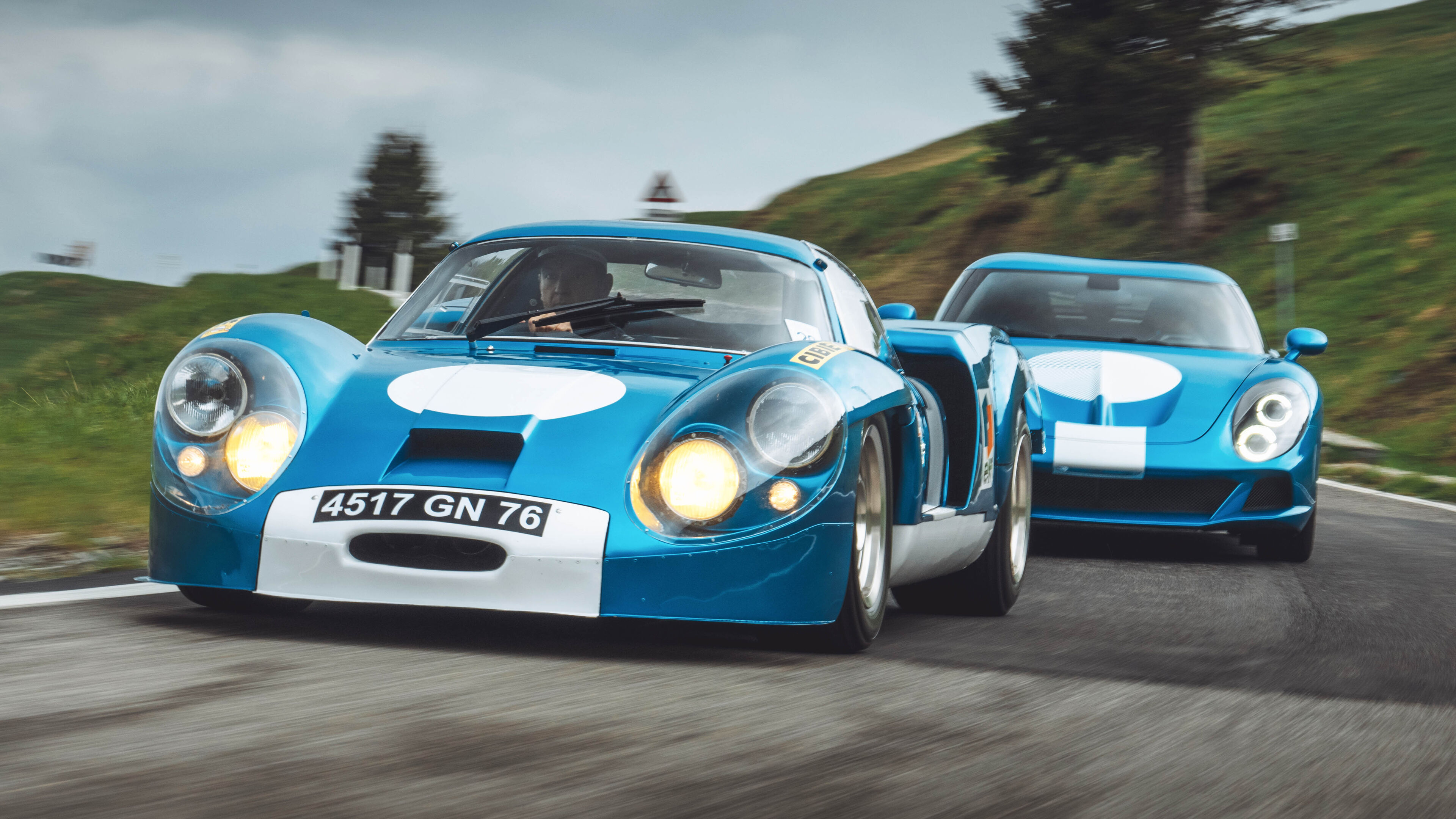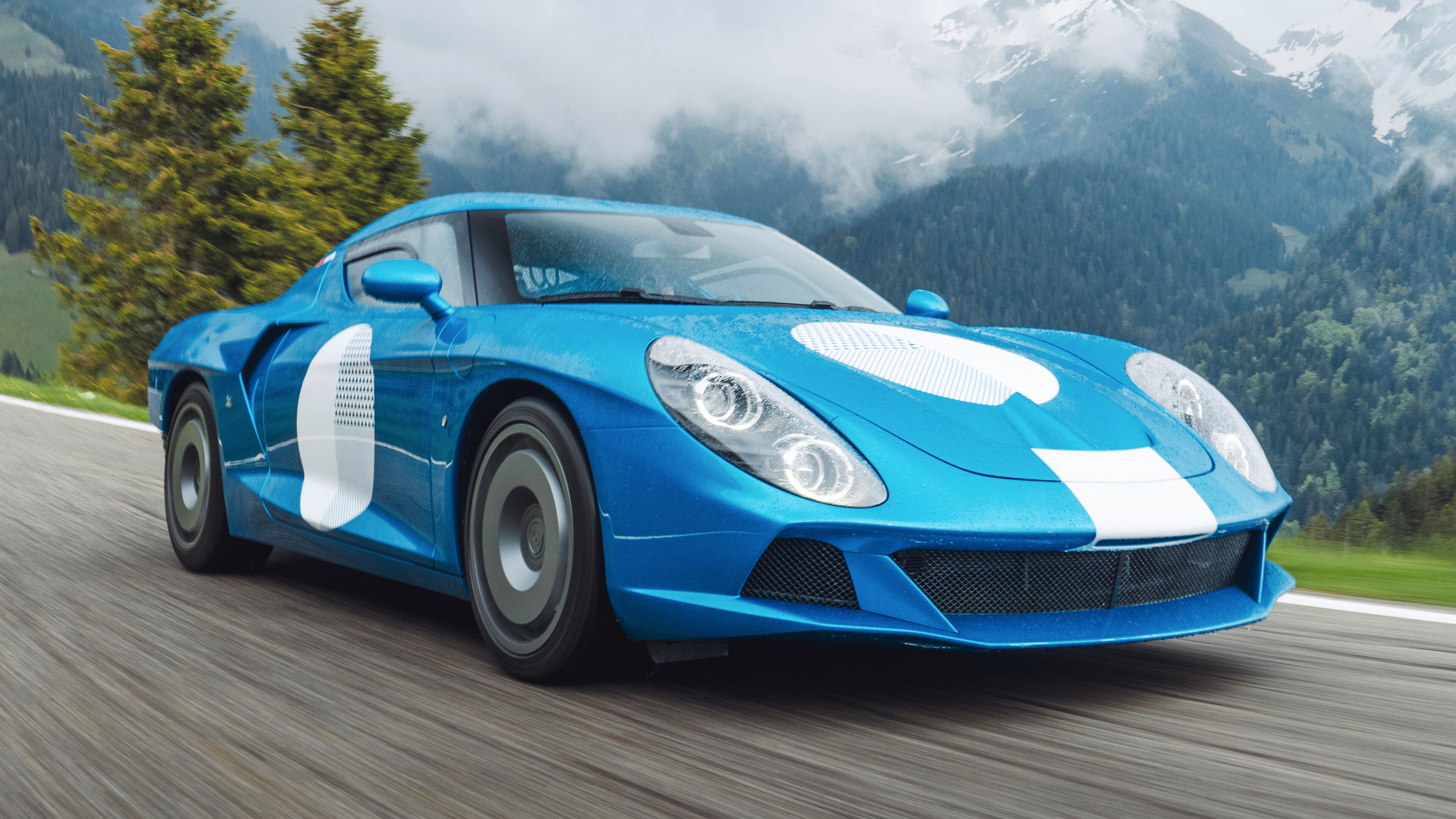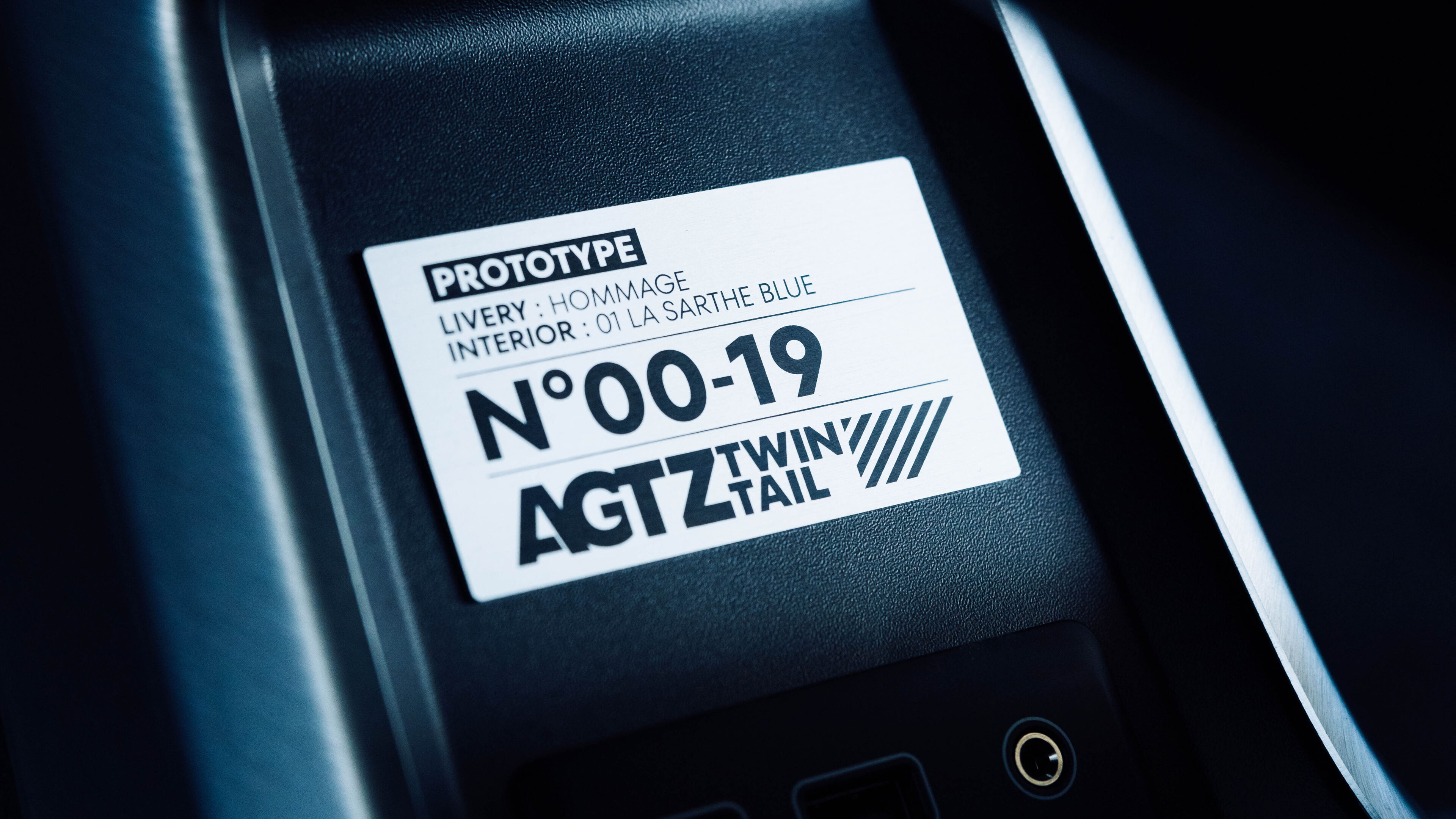
Rear of the year: a closer look at the AGTZ Twin Tail
What happens when you cross Zagato with Alpine? An A110 that can change its clothes
“Zagato is not an automotive manufacturer, it is a coach builder. We take care of the suits, not the technology. The technology could be endothermic, could be electric, could be hydrogen – we take care of the skin, the package around it,” says Andrea Zagato in a wonderfully evocative Italian accent, popping the collar of his suit jacket for emphasis.
The president and third generation of the Zagato clan looks briefly to one side and smiles slightly, his gaze falling fondly on the car to his right. A car that seems to polarise internet opinion like nothing else – the Zagato AGTZ Twin Tail, essentially a fully coachbuilt Alpine A110 S with a removable aerodynamic long tail. A unique and somewhat specific take on versatility.
There is, however, quite a lot more to this than it might appear, because this isn’t just a bolt-on back bit and headlight tweaks. The Alpine A110 that was has undergone major changes, albeit to the skin, rather than under it. The opposite of a sleeper. But when you want to resculpt the exterior, it probably pays to start with a healthy set of bones. After all, if you’re going to pick a modern car to reclothe, you need a solid base, and the A110 is a wonderful lightweight modern sports car in a world full of ever weightier complication.
Photography: manufacturer
Some 300 possible horsepower, RWD, mid-engined and lithe. But there’s more to this than just picking something with decent mechanicals, because the AGTZ is primarily formed by the weight of history. Retromodded, if you will. A recipe also more complex than it first appears because it involves our storied Italian coachbuilder, a racing car from the 1960s and a high end Polish car dealer. A success with many European fathers.
The racing car is the Alpine A220, a long tail Le Mans racer from the late 1960s that – despite its striking extended look and obvious aero – never lived up to its maker’s expectation in competition. Convinced of the car’s ability, if not its endurance racing success, Alpine engineers simply took an angle grinder to the original design’s bodywork and lopped 300mm from the back, creating a truncated short tail A220 more suited to tighter, shorter circuits and rally stages. Practical vandalism.
Hence the legend – a car that came in both short and extended forms, both iconic in their own moment. Both are distressingly pretty cars, delicate in the way that cars without true, modern safety systems can ever be, shrink wrapped over their tangle of birdlike metal bones. They are simple inside and out, clean and slick at the front, a little bit brutal at the rear in short tail formats – but filled with a sense of purpose. They even smell evocative, a mix of four star petrol and cold aluminium, old oil and hard use. Though you have to be petite to get in and gymnastic to get out, because racing drivers were smaller in the 1960s, apparently.
The direction to the AGTZ makes sense when you know the history, more so when you see the original cars and the new one together. There’s an entirely new carbon fibre body with headlights that echo the teardrops of the original. A choppier roof complete with Zagato’s gentle double bubble, a different mid-profile with a vent that doesn’t exist in the donor car. In short tail mode, the rear sports triangular themes, lots of horizontal strakes, sharper edges than the A110. It’s still recognisable as a modern Alpine, but... adjusted.
It’s not until the long tail section is applied that it becomes something else entirely, a car whose proportions – in line with long tail variants since time immemorial – are fascinatingly skewed. It’s too long for the wheelbase, the rear deck with its dual razor edged fins punting out and beyond. And yet, it works. It really shouldn’t, but it does.
The tail itself is remarkably easy to mount and dismount, just a matter of a few bolts and snap catches, the rear element scooped away seamlessly by a bespoke trolley supplied with the car. The exhaust stays in the same position – gases are channelled away by the extended Venturi in long tail configuration – rear lights revealed from beneath. You can still see the A110 in there, but with the long tail, it genuinely distorts the view. Is it pretty? Not as such. But it’s endlessly fascinating to look at. A moving art piece instead of just ‘a car’.
The interior, just for reference, is pretty much standard Alpine A110 S. There are new kickplates and bits of jewellery, Zagato specific seats and a different view from the side windows and windscreen, but anyone familiar with the base car will recognise most of it. The same large paddles for the 7spd DCT that can tap out an upchange in 260 milliseconds. The same driver’s binnacle with digi-dials, the same slightly cheap feeling central touchscreen.
The spar in the middle takes care of the start and gear selection buttons, and even though it doesn’t feel as special from the inside as it does from the out, it’s still neat, clean and useful. It should also perform as well as the standard car, at least. With the carbon bodywork weighing little more than standard, even without the available power upgrades (options on the Zagato package), the AGTZ should match the A110’s top speed of 171mph and 0–62mph in just over four seconds.
Top Gear
Newsletter
Thank you for subscribing to our newsletter. Look out for your regular round-up of news, reviews and offers in your inbox.
Get all the latest news, reviews and exclusives, direct to your inbox.
Without knowing the past, you cannot invent the future
But the really interesting thing here is how the project came about – and it’s as odd as the AGTZ itself. It began with the owner of Polish high end car dealer La Squadra. A company whose ‘high end’ is literal... Ferrari’s preferred outlet, dealer of Bugatti, Rimac, Koenigsegg, Pagani and yes, Alpine.
CEO Jakub Pietrzak was always a big fan of the French carmaker, had always admired the cleanliness of the lines of the A210 and A220. He randomly met Andrea Zagato at an official function, and conversation turned to what Zagato the company might do next. A design based around a current McLaren was mooted, but later, Pietrzak had an idea (in the shower, as legend has it) for an homage to Alpine. Something that told the story of the shortened long tail with a modern twist.
“We are just at the beginning of this renaissance,” he says. “Electrification increases competition and it’s harder to differentiate products in terms of performance and driving stimuli. Design will take on greater significance, allowing artisan coachbuilders to step onto the stage and deliver unique projects that will separate intrepid brands from the rest of the pack.”
A translation of which seems to point at the idea that if you’ve all got a very similar electric drivetrain, you might as well make it look largely unique – and coachbuilding of ‘specials’ will become ever more popular. The Twin Tail feels like it strikes the right balance. You’ll be able to have it with any livery you desire, or choose one of the historic versions – none of which will be the same in the 19-car run, with Zagato handling production and La Squadra managing marketing and sales.
The €650,000 price [£550k] – plus local taxes – will ensure that they are not common, even if they are easy to drive and use. But this isn’t really about the money – the AGTZ is a process, a project, an idea made real. More art than science or finance, more passion than business. It leads you to a story you may not have known, makes the car world a little bigger.
“Without knowing the past, you cannot invent the future,” says Zagato. And in the AGTZ, the past has inspired a fascinating present.
Trending this week
- Car Review
BMW iX3











